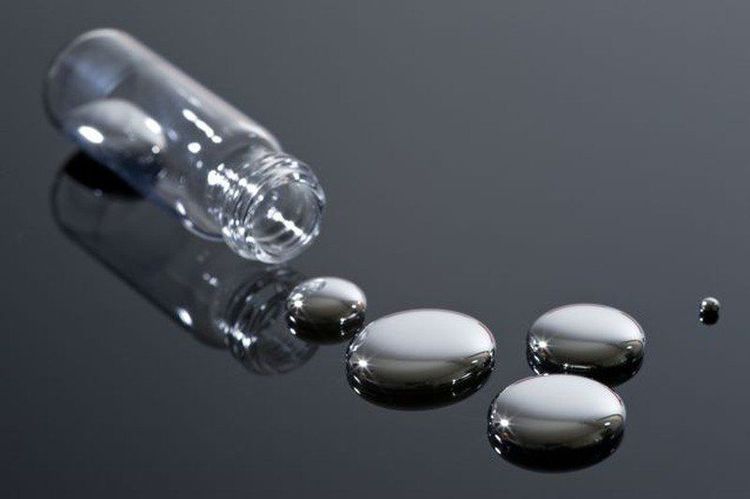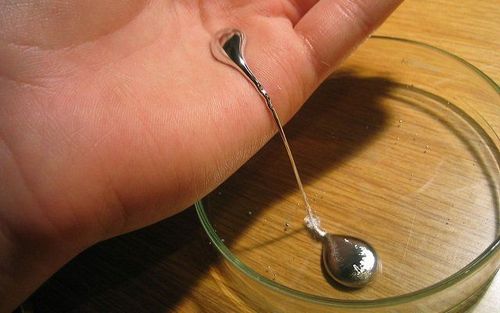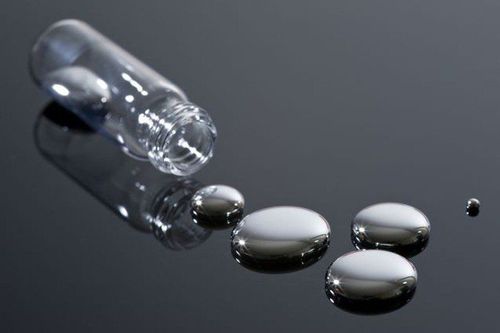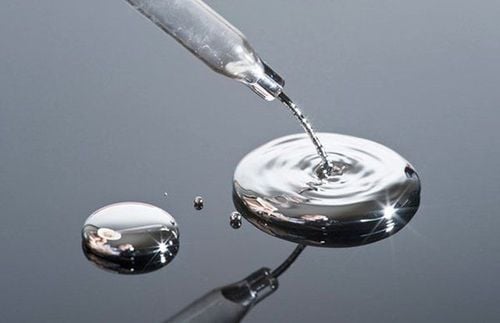This is an automatically translated article.
The article is professionally consulted by Master, Doctor Vu Huu Thang - Emergency Resuscitation Doctor - Emergency Resuscitation Department - Vinmec Ha Long International HospitalMercury poisoning seriously affects human health, causing toxicity to the respiratory system, kidney inflammation, patients vomiting blood, whole body exhaustion, even the risk of death within 24-36 hours.
1. Important facts about mercury
Mercury (Mercury) is a naturally occurring metallic element found in air, water and soil. Exposure to even small amounts of mercury can cause serious health problems, posing a threat to fetal development and early life. Mercury poisoning damages the nervous, digestive, immune systems, lungs, kidneys, skin and eyes. Mercury has been listed by WHO as one of the ten chemicals or groups of chemicals with the most serious public health effects. Humans are mainly exposed to mercury in its methyl form (Methylmercury). This is an organic compound found in some fish and crustaceans. Another form of mercury is ethylmercury. Ethylmercury is used as a preservative in some vaccines and does not pose a health risk.
2. What is mercury?
Mercury is a chemical element belonging to the metal group, in liquid form, with symbol “Hg” and atomic number 80. Mercury in nature can exist in many different forms: metallic element, form inorganic (which is harmful to people in occupations where there is a risk of exposure to hazardous substances such as chemical plant workers) and organic (for example, methylmercury, which people can come into contact with) contact through eating). With different forms of mercury, their toxicity and adverse effects on human health also vary.Mercury is found naturally within the earth's crust. Mercury is released into the environment from volcanic activity, rock weathering, and human impact. In particular, human production activities are the main cause of mercury release into the environment, especially thermal power plants, coal furnaces, civil coal burning for heating and cooking, industrial centers. , waste incinerators, the consequences of the extraction of mercury, gold and some other metals.
In the natural environment, mercury can be affected by bacteria and converted to methylmercury. Methylmercury causes bioaccumulation in fish and crustaceans (bioaccumulation occurs when a living organism contains a substance in higher concentrations than in the surrounding environment). Methylmercury also causes the accumulation of toxins in the food chain. For example, large predatory fish often have high levels of mercury from ingestion of many smaller fish that have been contaminated with mercury through eating even smaller plankton.
Humans can be exposed to mercury in any form under many different circumstances. However, mercury exposure mainly occurs through ingestion of fish and crustaceans contaminated with methylmercury. In addition, industrial plant workers can also breathe in mercury vapor as an occupational accident. Cooking and food preparation cannot remove mercury.

3. Is exposure to mercury toxic?
We are all at risk of mercury exposure. Most people are exposed to low and insignificant levels of mercury, and toxicity occurs usually from continuous long-term exposure. However, some people are exposed to high levels of mercury, known as acute mercury exposure (which occurs over a short period of time, often less than a day). Examples of acute exposure to mercury are in the event of an occupational accident, a broken light bulb, or a factory fire.Factors that determine if exposure to mercury is toxic include:
Type of mercury; dose or concentration of exposure; The victim's age or developmental stage (fetus is the most vulnerable); contact time; Route of contact (such as inhalation, ingestion or direct skin contact). In general, whether mercury is toxic depends on the risk factors listed above. There are 2 groups of subjects that are very sensitive to the effects of mercury: fetuses and people with chronic exposure.
The fetus is the first and most susceptible to being affected. Acute exposure to methylmercury during pregnancy may result from the mother's intake of fish and crustaceans. Acute mercury poisoning adversely affects a baby's developing brain and nervous system. The main health effect of methylmercury on the fetus is impaired neurodevelopment. Specifically, it seriously affects children's thinking ability, perception, memory, attention, language ability, spatial and visual skills. The second group of victims are people who are regularly exposed (chronic exposure) to mercury over a long period of time (such as those who depend on fishing, factory workers or households). around the industrial park, near the discharge area).
4. How toxic is mercury?
Mercury causes toxicity mainly in the central and peripheral nervous systems. Inhalation of mercury vapor can damage the nervous, digestive and immune systems, lung and kidney toxicity, potentially leading to death. The inorganic salt form of mercury is corrosive to the skin, eyes, gastrointestinal tract, and kidneys.Neurological disturbances and behavioral disturbances occur after the victim inhales, ingests, or has direct skin contact with various forms of mercury. However, how toxic mercury is depends on different factors when exposed. Common symptoms of mercury poisoning include tremors, insomnia, memory loss, neuromuscular effects, headaches, and cognitive and motor dysfunction. Mild and subclinical manifestations of mercury poisoning may occur in workers exposed to airborne mercury concentrations of 20 μg/m3 or more over a period of several years. Adverse effects on the kidneys have also been reported, including increased protein in the urine and renal failure.

5. How to reduce mercury exposure?
There are a number of ways to prevent mercury's adverse health effects, including promoting clean energy, eliminating mercury in gold mining, stopping mercury mining, and phasing out by-products. contain unnecessary mercury.5.1. Promoting the use of clean energy sources Burning coal for energy and heat is the main source of mercury emissions. Mercury and other air pollutants will be released into the environment during coal burning in thermal power plants, industrial boilers and household stoves.
5.2. Stop mercury mining and don't use mercury in gold mining Mercury is indestructible. Because of this property, mercury has already been used in the recycling process for other purposes, so there is no need to mine mercury anymore. The use of mercury in gold mining on a small scale has the potential to be dangerous and seriously affect public health. Mercury-free gold mining methods (with the exception of cyanide) need to be more widely adopted. When mercury is used in industrial processes, it is essential to use safety measures to prevent exposure.
5.3. Remove and dispose of unnecessary mercury-containing products Mercury is found in many products around us, including:
Batteries Measuring devices, such as thermometers and manometers Electrical switches and relays in electrical equipment Bulbs Dental amalgam (amalgam) Skin lightening products and certain cosmetics Some pharmaceuticals Currently, manufacturing facilities are working to reduce mercury levels in products or discard products that contain mercury. In healthcare, thermometers and sphygmomanometers containing mercury are being replaced by other devices.
Dental amalgam is used in many parts of the world. Scientists are conducting research and developing effective alternatives to this material both in terms of cost and quality.
Inorganic mercury is added to some skin-lightening products in significant doses for certain purposes. Many countries have banned the use of skin lightening products containing mercury because they pose a health risk to humans.
The adverse effects of mercury on human health have become a concern of governments around the world. Currently, countries have been working to implement a series of different actions to deal with the amount of mercury released into the air, minimizing the production and use of products containing mercury.
Please dial HOTLINE for more information or register for an appointment HERE. Download MyVinmec app to make appointments faster and to manage your bookings easily.
Article references source: Who.int













